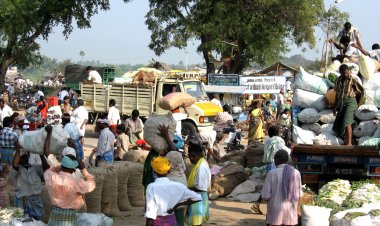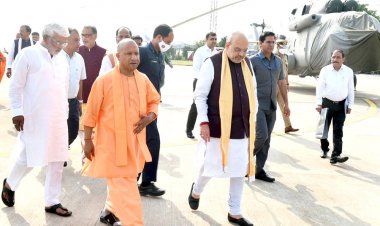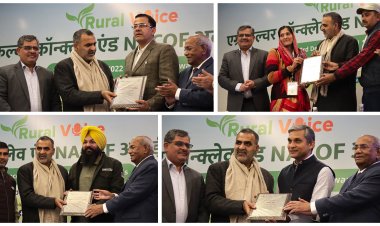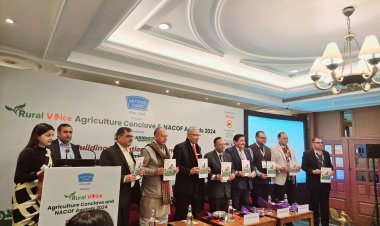Why Indian Agriculture needs more Amuls to succeed
The stand-off between the Government and farmers at Delhi’s borders over a set of bills which seek to reform agricultural marketing has once again put the spotlight on the plight of Indian farming which suffers from costly capital, limited market access, lack of technological breakthroughs and fractured land holdings.

The stand-off between the Government and farmers at Delhi’s borders over a set of bills which seek to reform agricultural marketing has once again put the spotlight on the plight of Indian farming which suffers from costly capital, limited market access, lack of technological breakthroughs and fractured land holdings.
It has also once again placed the spotlight on the one viable answer to the farm sector’s woes - successful replication of the Amul cooperative model in other sectors of farming and in other states.
With each generation, India’s farms are getting fragmented to a point where today nearly 90 per cent of farmers own less than 2 hectares of land. The number of marginal farms with less than one hectare under cultivation has risen dramatically from 36 million in 1971 to 93 million in 2011 and has possibly crossed the 100 million mark by now.
The smaller the farmer is, the more difficulty he has in accessing financing at reasonable rates and as a corollary in holding on to his crop for a better price or for that matter in dictating his terms in the commodity market. He is perforce a price taker and never a price setter.
No wonder farmers are forced their potato crops for Rs 2 a kilo, even when the price of potatoes are Rs 40 a kilo in the capital city.
Let us see what forces him to this plight. Though scheduled banks are supposed to lend at between 6-8 per cent interest to agriculturists, the reality is that the small farmer with little financial and political clout and very often without proper title records of his fragmented inheritance is unable to access this route to cheap funding.
He is left to try and get terms from the traditional grain-buyer-cum-money lender or from the new razor-sharp micro-finance institutions who charge him anything between 18-36 per cent for their money. Inputs costs have been spiralling as have been rentals for farm machinery and the cost of hired farm-hands. This simply adds to his monetary problems. At the same time, adoption of new farm technology often comes at a higher cost, which acts as a deterrent and forces him to continue with older low yielding techniques.
A crop failure or a downswing in crop prices (which happens very often nowadays), leaves the farmer more often than not, financially devastated. Even with a bumper crop and better prices, the high cost of finance often leaves little profit for the farmer.
To be able to hold out for a better price by keeping his crop in a cold storage of the kind which Adani Logistics is building for FCI, he would have to shell out money which he does not have and hence that route too is ruled out for him. As is the possibility of directly selling his crop to the urban market, given again the high cost of transportation and retail selling.
For him the ideal answer would have been a cooperative which could negotiate farm loans with big scheduled banks for him, bulk purchase his farm inputs, share farm machinery with him at reasonable costs, use its financial power to rent cold storage at low costs or even build silos and most importantly use its collective power to be a price setter in the market. Perhaps to even cut out the middle-man – whether it be the `artia’ from the Mandi or the large corporate turned grocer - and sell directly to the consuming public and possibly even export to neighbouring countries!
India has a long and rich history of cooperatives. Among the earliest experimenters and advocates of the cooperative movement in farming was the poet and thinker Rabindra Nath Tagore himself as early as in the 1920s. The Amul success story started out in 1946, a year before India’s independence.
Yet the ability of the cooperative sector to influence the market either for farm credit or for crop marketing is extremely limited. Gujarat’s Amul and West Bengal’s Benfish are among the few success stories which come to mind. While the first helped usher in the `White revolution’ making India the world’s largest milk producer, the second helped bring in the `Blue Revolution’, making India the second largest producer of farmed fish.
However, the harsh fact is that despite the department of cooperatives’ impressive numbers, and the promises of various budgets to set up farmer producer organisations, there are very few truly big farmer cooperatives which could stand up to the pressures of corporatisation of the agricultural marketplace that is happening today and turn our farmers into genuine price setters instead of price takers.
(Writer is a senior journalist)



 Join the RuralVoice whatsapp group
Join the RuralVoice whatsapp group









































